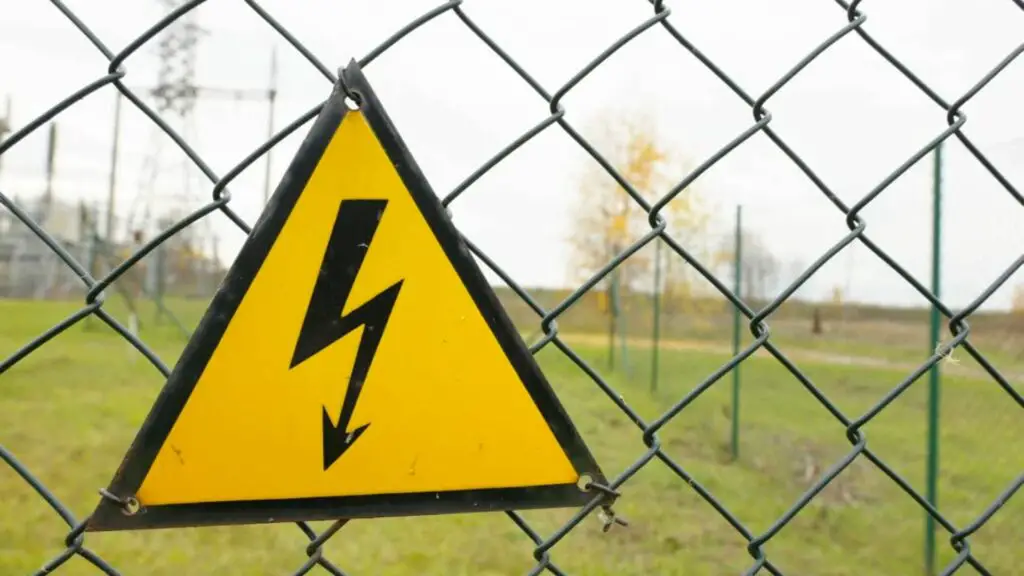
Electric fencing is a popular choice for many farmers, but can you use it for camelids such as llamas and alpacas? The short answer is yes – but with some caveats. Electric fences are not the same as barbed wire, so it’s important to know how they work and how best to use them in order to keep your animals safe. In this blog post, we’ll discuss the basics of electric fence usage with regards to camelids and provide tips on how to make sure your fence will be effective.
What is an electric fence?
An electric fence is a physical barrier that uses an electric current to deter animals or people from crossing a boundary. Electric fences are used in agriculture to contain livestock, and in residential settings to keep intruders out. When an animal or person touches the fence, they receive a shock that is strong enough to deter them from crossing the boundary again.
How do electric fences work?
Electric fences are a safe and effective way to keep your camelids contained. They work by delivering a short, sharp shock to your animals when they touch the fence. The shock is not harmful, but it is enough to deter your animals from trying to escape. Electric fences are easy to set up and can be used with any type of fencing.
How to set up an electric fence for camelids
If you’re wondering how to set up an electric fence for camelids, the process is actually quite simple. All you need is a fencer, some posts, insulators, and wire. Here’s a step-by-step guide:
1. Start by setting up your fencer. This can be done by mounting it to a wall or post, or simply placing it on the ground. If you’re using a wall mount, make sure the unit is at least 3 feet off the ground so that animals can’t reach it.
2. Next, install your posts. These can be made of wood, metal, or plastic, and should be placed about 10 feet apart. Be sure to drive them into the ground so they’re nice and sturdy.
3. Once your posts are in place, it’s time to add the insulators. These will keep the wire from touching the ground and shorting out. Simply thread the wire through the insulators and attach them to the posts using screws or nails.
4. The final step is to attach the wire to the fence charger. This can be done by clipping it onto the positive terminal or attaching it with alligator clips. Once everything is connected, turn on your fence charger and you’re ready to go!

Tips for using electric fences with camelids
Electric fences are a great way to keep your camelids safe and secure. Here are a few tips to help you get the most out of your electric fence:
1. Make sure the fence is tall enough. Camelids are tall animals and can easily jump over low fences. A good rule of thumb is to make sure the fence is at least 6 feet tall.
2. Use a strong, durable fence charger. Camelids are heavy animals and can put a lot of strain on an electric fence. Make sure to use a charger that is designed for heavy-duty use.
3. Be consistent with charging the fence. An electric fence will only be effective if it is consistently charged. Check the charge level regularly and top it off as needed.
4. Use visual aids along the fence line. Camelids are curious animals and may try to investigate an electric fence if they see something interesting on the other side. To deter them from doing this, place visual aids (such as flags or ribbons) along the fence line to make it more visible to them.
5. Train your camelids to respect the electric fence. Like any animal, camelids will need to be trained to respect an electric fence before it can be truly effective in keeping them contained.
What animals can you use electric fences with?
There is a common misconception that electric fences cannot be used with camelids, but this is not the case. Electric fences can be used with any animal, including camelids, as long as they are properly designed and installed.
Animals such as rabbits, deer, foxes, coyotes, horses and bears can be successfully contained by an electric fence with the proper voltage, wire type, and quantity.
When it comes to electric fences, there are two main types: permanent and portable. Permanent electric fences are typically found on farms or ranches, while portable electric fences are more commonly used for hunting or camping.
Permanent electric fences are usually made from metal or fiberglass posts that are driven into the ground. The fence wire is then attached to these posts and energized with an electrical current. Portable electric fences are typically made from plastic or wood posts that can be easily set up and taken down. The fence wire is also attached to these posts and energized with an electrical current.
Both types of electric fences work by delivering a shock to any animal that touches the fence wire. The size of the shock will vary depending on the type of fence, the amount of electricity running through the fence, and the size of the animal touching the fence. Generally speaking, larger animals will receive a bigger shock than smaller animals.
Electric fences are an effective way to keep camelids contained in a specific area. When used correctly, they are safe for both animals and humans.

Are electric fences safe for animals?
Yes, electric fences are safe for animals when used correctly. Camelids are relatively medium sized animals so they do not require as much power to deter them from crossing the fence line.
The current that is emitted from the fence is not enough to harm them, but it is enough to startle them and keep them from trying to cross the fence.
Are there any risks associated with using an electric fence?
There are several risks associated with using electric fencing with camelids. If the fence is not properly installed, maintained, and monitored, it can pose a serious risk to the animals.
Electric fences can shock and even kill camelids if they come into contact with them. In addition, electric fences can also create a fire hazard if they are not properly installed and maintained.
What Fencing Is Best For Alpacas?
The optimum fence for alpacas is a no-climb woven wire fence that is at least 4 feet high and has openings that are approximately 2×4 inches in size.
There are a few things to consider when determining what type of fencing is best for your alpacas. The first is the height of the fence. Alpacas are relatively small animals, so a fence that is too tall can be intimidating and may cause them to avoid using their pasture. A good rule of thumb is to make sure the fence is at least 3 feet tall, but no more than 5 feet tall.
The second factor to consider is the type of fencing material. Alpacas are very curious creatures and will try to chew on almost anything. This means that you’ll want to avoid using any type of fencing material that could be harmful if ingested, such as barbed wire or chicken wire. Instead, opt for a solid fence made from materials like wood or vinyl.
Finally, you’ll need to decide whether or not you want an electric fence. Electric fences can be effective in deterring predators, but they can also be dangerous for alpacas if they come into contact with the live wires. If you do choose to use an electric fence, make sure it is properly installed and well-maintained to minimize the risk of injury to your animals.
Conclusion
In conclusion, electric fencing can be used with camelids but it’s important to be aware of some key points beforehand. Invest in a quality fence that is designed specifically for use with camelids and take the time to properly train them on its usage. When combined with proper nutrition, exercise, and regular veterinary visits, an electric fence can provide additional protection from predators while allowing your camelid herd plenty of room to roam.

Hi, I am Dale. My husband and I bought our first llama, an 18-month-old male llama, Pumpernickel, in 1984. Since then, they are evergrowing; LlamaWeb is intended to provide information about llamas for people interested in these South American camelids.






![Raw Camel Milk [Legality, the FDA and Regulations]](https://llamaweb.com/wp-content/uploads/2023/02/Raw-Camel-Milk-768x433.jpg)